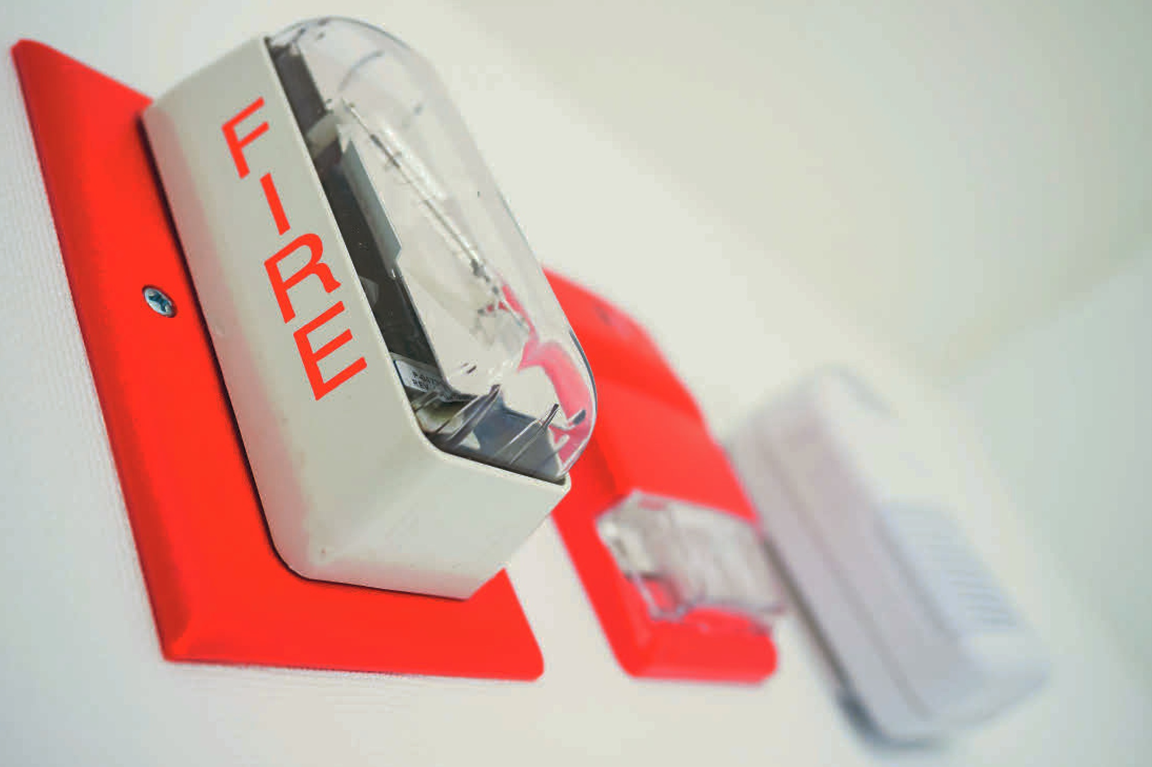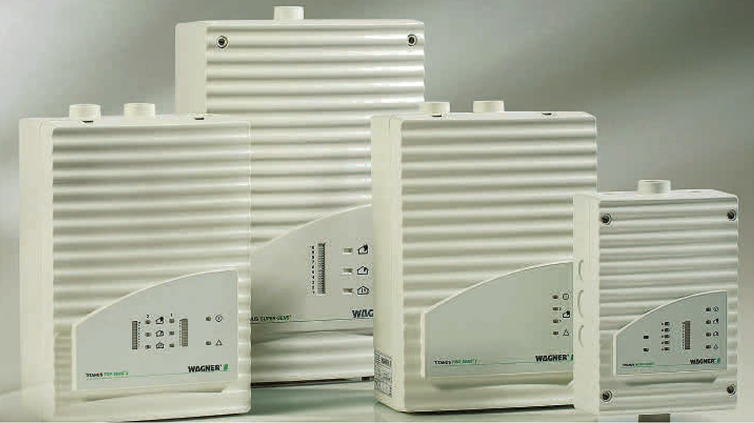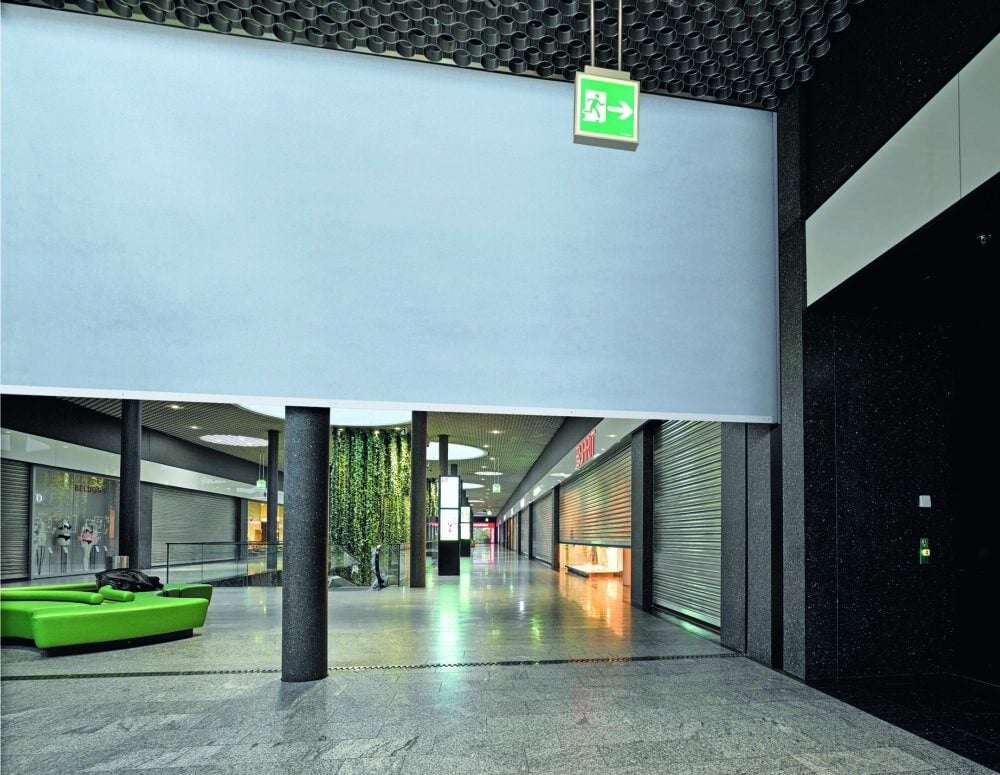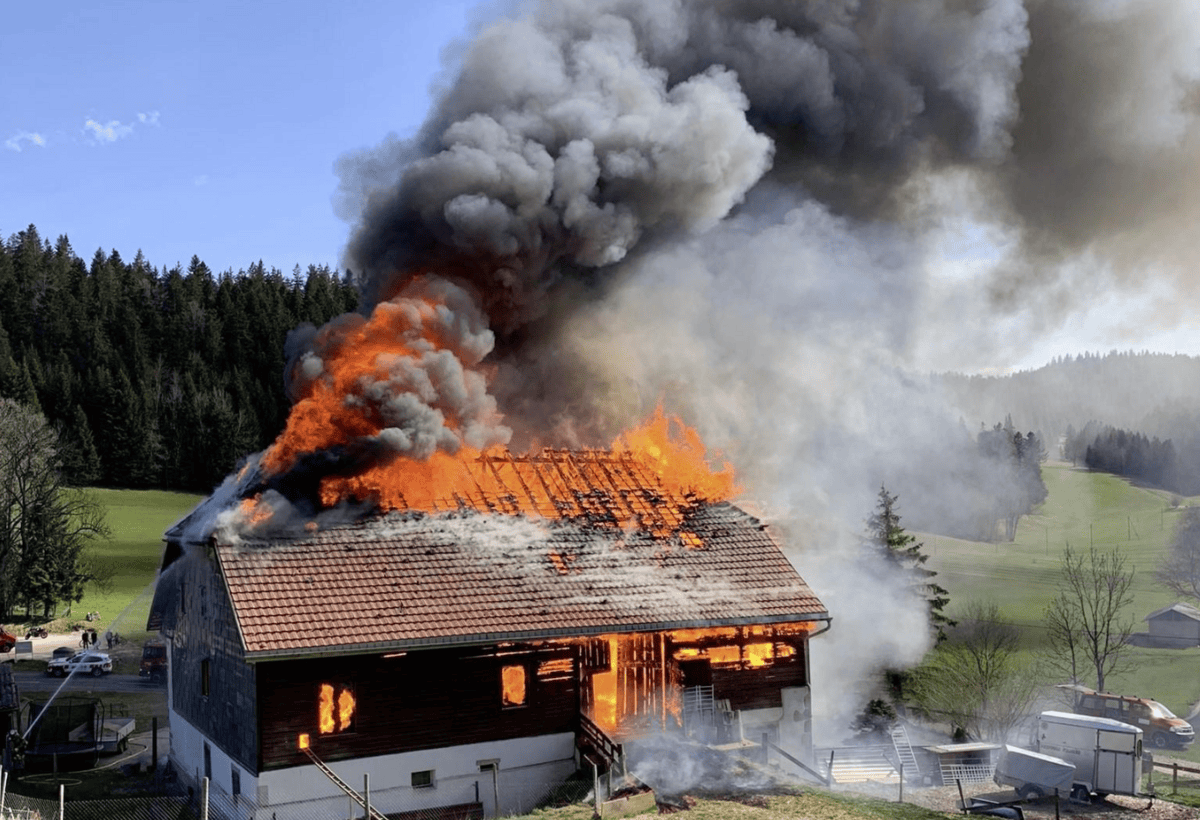Smoke development: early fire detection and early fire detection systems
Smoke and fire have always been a serious economic factor for companies. Damage reduction means detecting fires as early as possible - and extinguishing them. In addition to standard fire detectors, early fire detection systems are therefore used in important areas.

The common feature of the commercially available fire and smoke detection solutions is that they work on an optical basis - the ionization detectors that were frequently used in the past have no future in Europe, mainly because of the radioactive components they contain due to disposal problems. Apart from the quality in detecting fire situations, the filtering out of disturbance variables plays an important role, because business interruptions caused by false alarms are expensive. In new fire protection concepts, therefore, the response is now graduated according to the danger detected. Whereas a cigarette in a data center used to lead to a full shutdown and, if necessary, to the triggering of an extinguishing system, nowadays optimized technology is used to tackle the cause and eliminate it in a targeted manner without interfering with extensive processes or triggering maximum firefighting measures.
Decide operating conditions
Depending on the atmospheric operating conditions and the presence of disturbance variables, such as dust, smoke or steam, different detection systems can be used. For example, thermal imaging cameras are available for landfills and areas with similar conditions, and can also be used in outdoor areas to monitor flammable material. Operating in the 8 to 12 µm range, IR cameras can see through steam and smoke without these disturbances causing false alarms. Optical calibration of the measuring range is performed periodically by reference bodies placed in the monitoring area.
Video surveillance cameras that only record visible light are now also used for fire detection, for example in tunnels. The advantages are the considerable range and that they are often available anyway. How reliably the technology works depends largely on the video analysis used, in addition to the choice of location for the camera. Detecting visible flames is the lesser problem here. Bosch Security Systems recently introduced a video analysis module that detects flames even at long monitoring distances. Detecting fire smoke sufficiently early but with a low false alarm is likely to be more difficult.
Smoke aspiration systems
In indoor areas with high values, such as data centers, museums or archives, smoke aspiration systems are now regularly used. Here, too, the same applies with a view to avoiding false alarms: It is not always necessary to install the highest-quality early fire detection system in an object, but the one that is suitable in terms of sensitivity.
In smoke aspiration systems, the sensor technology usually works according to the scattered light principle, both with IR light, laser light or also with light in the visible range. On the basis of the particle sizes and with algorithms that are now fully developed, a distinction is made between smoke, dust and vapor, with usually tolerable false alarm rates.
The TITANUS smoke aspiration systems from Wagner, for example, can currently measure disturbance variables of up to 0.0015% light obsc/m light turbidity. By comparison, this is about 2000 times more sensitive than a conventional point detector. A particularly bright red LED, a High Power Light Source (HPLS), is used as the light source. Since environmental variables play an important role, especially in fire detection, it is also interesting that it can be used in temperature ranges as low as -40°C.
Know what burns
For efficient firefighting, it is important to know as much as possible about the fire. The system should not only tell if and where there is a fire, but also what is burning. Here, too, algorithms are now helping. For example, in the Wagner TITANUS Top Sens, the type of fire is detected based on the behavior of the smoke. And in the new TITANUS Multi Sens, the individual smoke particles are analyzed to detect a fire pattern and thus determine the type of fire, for example whether wood, cardboard or paper is burning, or just a cigarette.

Current research projects
However, current developments in gas sensor technology, in which the presence of fire-typical particles in the air can be used to infer the presence of a fire, are to be used in the medium term not only in such high-end solutions, but also in the area of standard detection technology. To this end, the "Brandi" project is being funded until mid-2016 as part of the German safety research program. On the one hand, the companies involved want to find out which characteristic gases are produced in the early stages of a fire. A measuring system is then to distinguish these "fire odors" and detect the onset of a fire earlier than optically operating detectors. In addition, the system should also be able to warn of hazardous substances in the ambient air. A similarly oriented research project, also designed to run until 2016, is currently also being funded by the EU. With the collaboration of Fraunhofer, "Smokesense" is working on a simple, low-cost multisensor that can detect and distinguish between a variety of gases present in low concentrations. Here, too, the question is being asked as to how reliably the presence of a certain combination of gas particles indicates a developing fire.
Early fire detection or early fire detection?
These terms are not precisely defined. Ultimately, it is a decision for the suppliers which attribute they assign to which system. Correctly, they are mainly used for aspiration systems that detect earlier than those without aspiration. Here, with EN 54 Part 20, which has been in force since 2009, there is also a classification based on performance. Smoke aspiration systems are classified here according to sensitivity classes (A = high, B = medium, C = normal). The classification evaluates the overall design of a system, i.e. the detector sensitivity including the periphery, such as the number of air sampling openings, pipe length, pipe accessories and filters. In particular, the number of air sampling openings influences the classification here. Including the test fires newly defined for evaluation, this should make it possible to make a largely accurate statement on the quality and suitability of a detection system.









